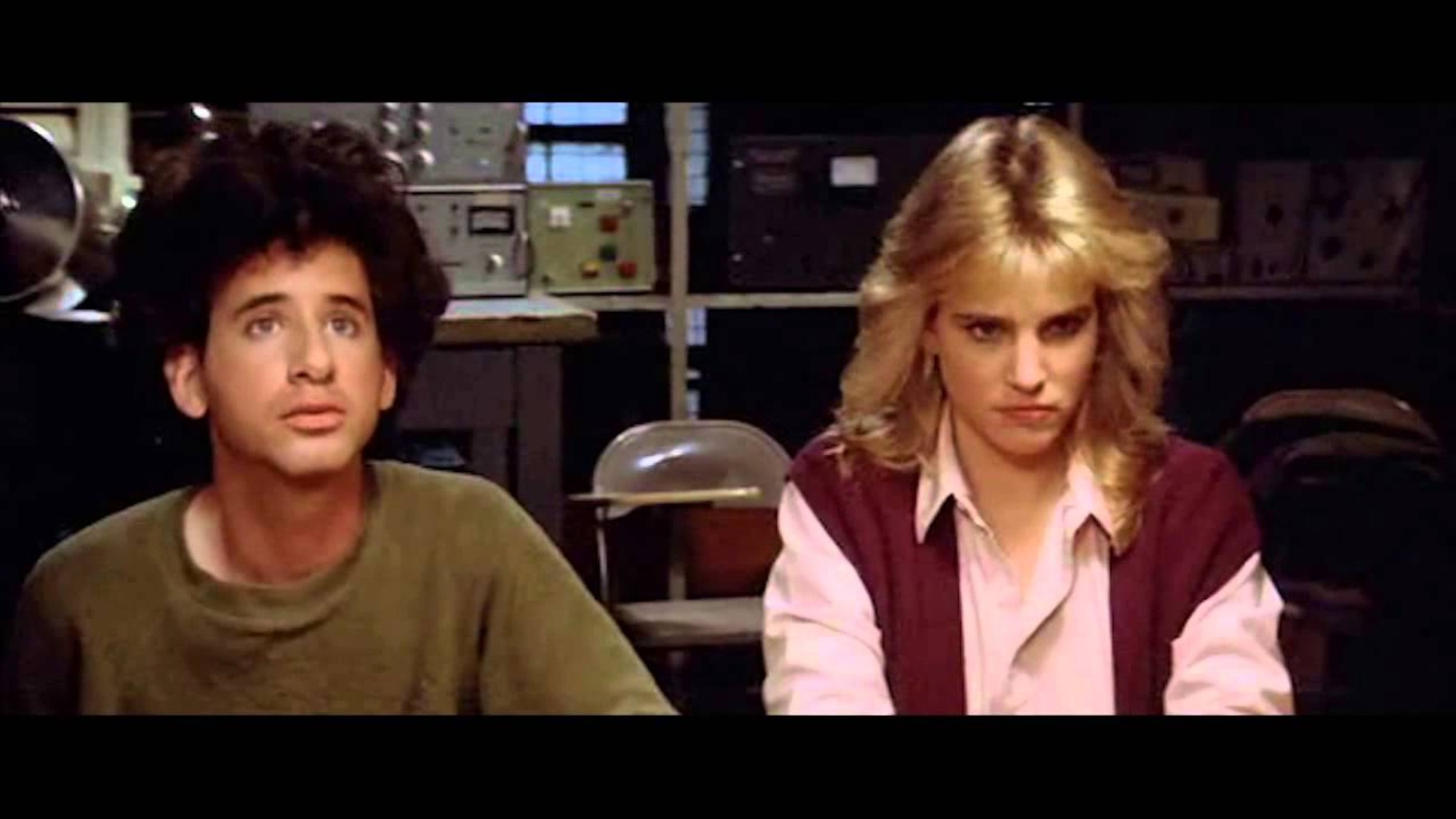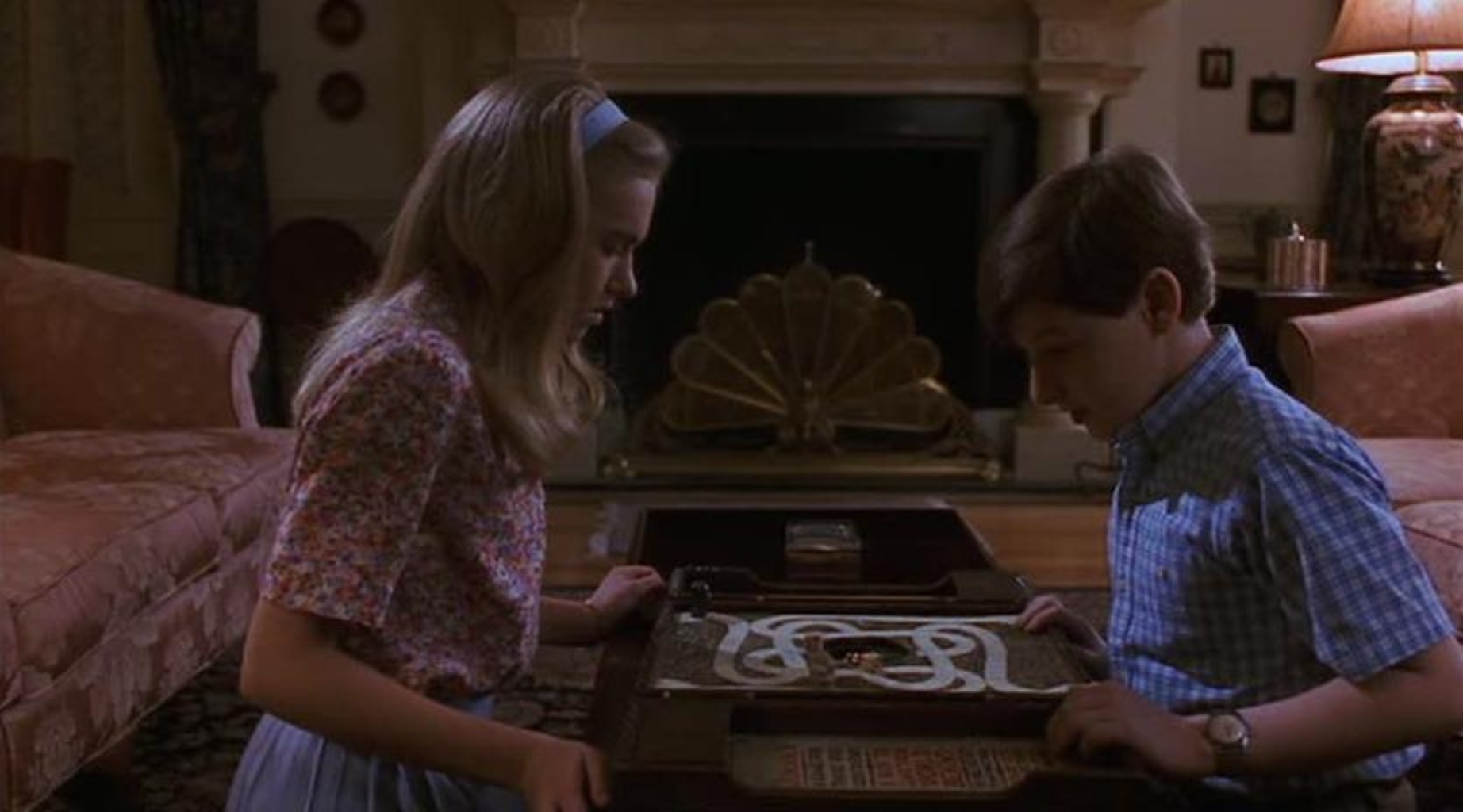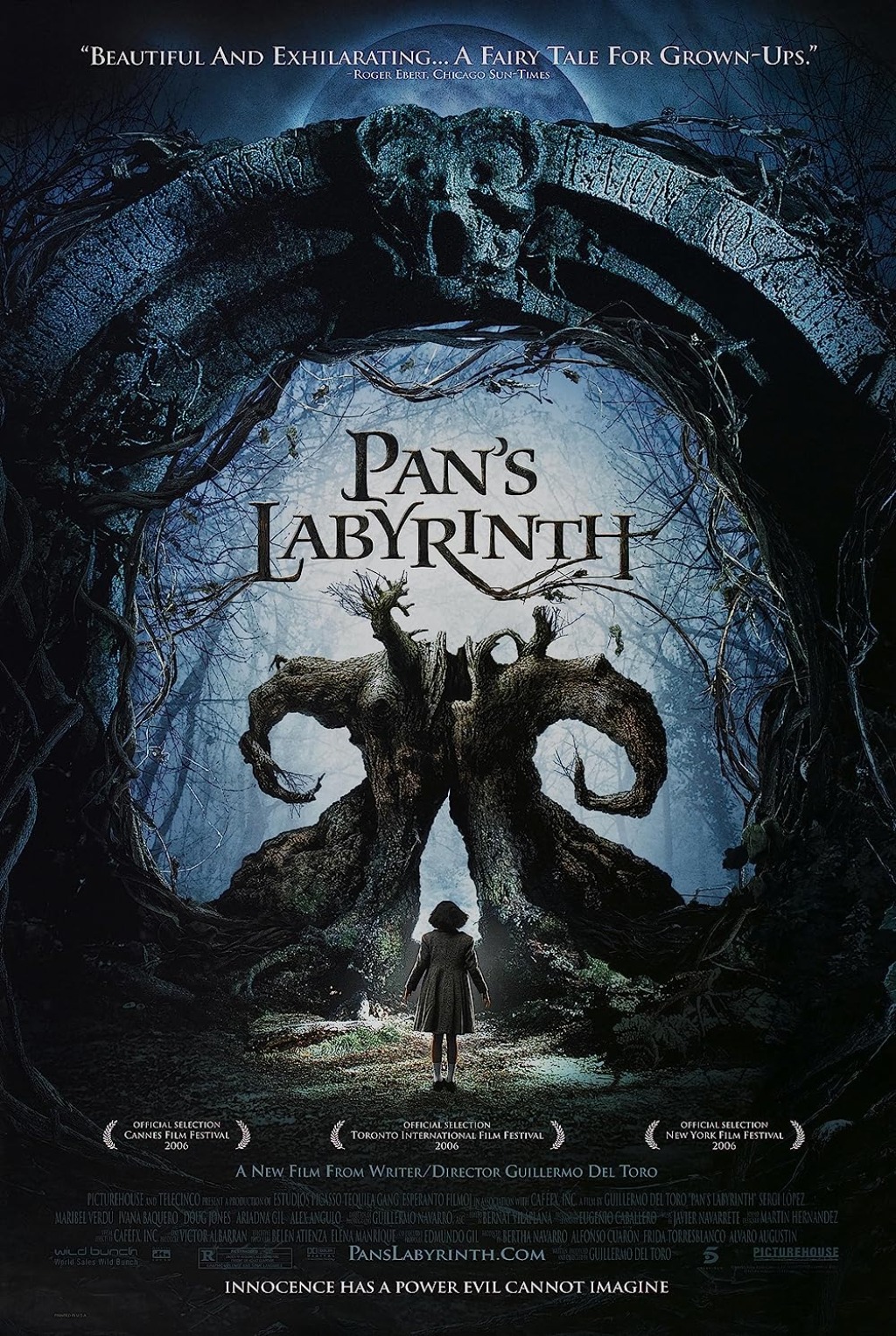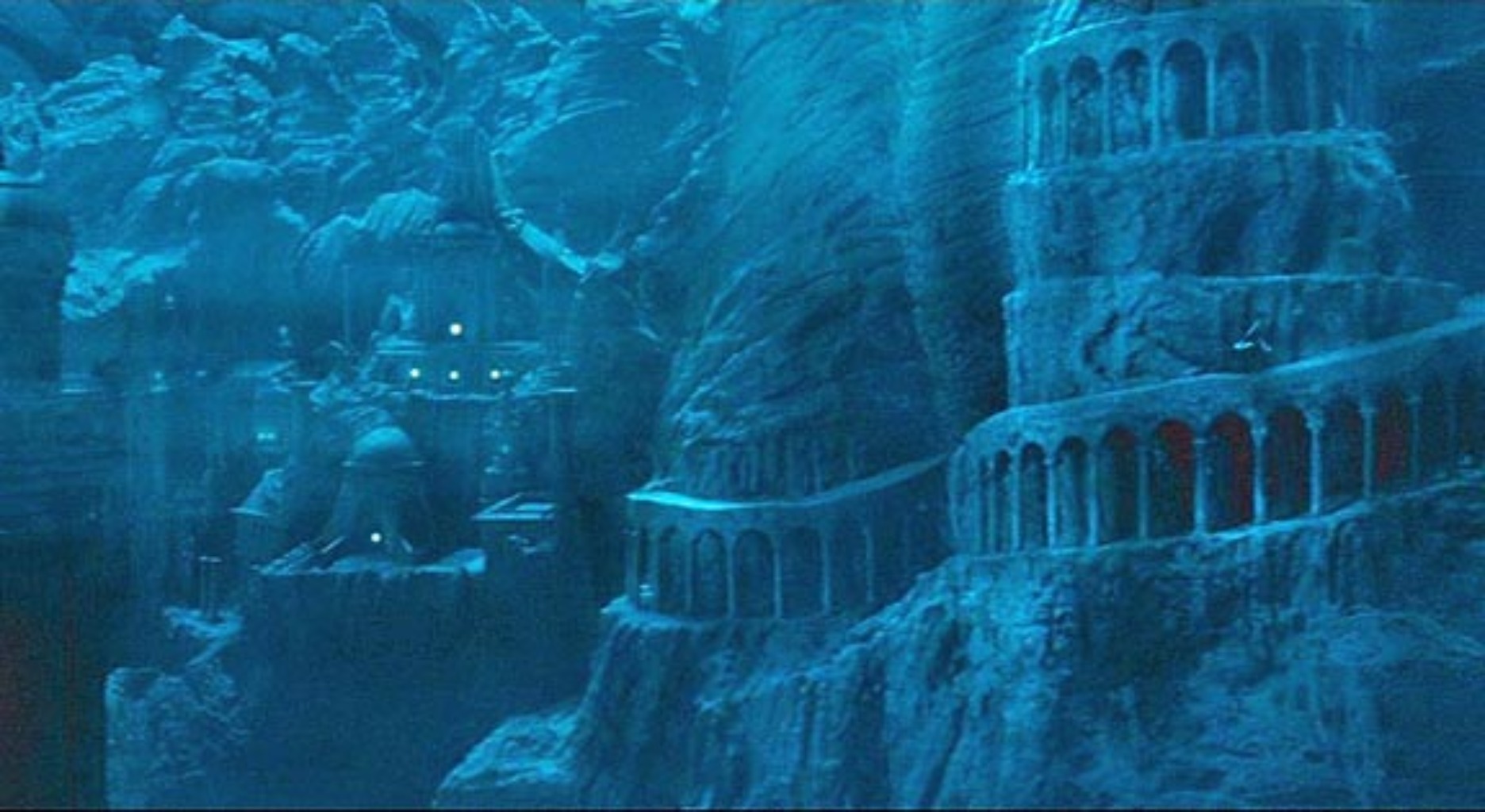Last week we talked about low fantasy TV shows and how studying them can improve your writing. Now we’ll be discussing low fantasy movies!
You may not even realize how many of your favorite movies are a part of the low fantasy subgenre. Low fantasy, commonly referred to as “intrusion fantasy”, is fantasy fiction where magical events intrude upon what is otherwise a normal, mundane world. If you think about it, you will realize that a lot of great films fit this bill.
The movies included in this post are from three different decades—the 1980s, the 1990s, and the 2000s. Through them, you’ll be able to see how different storytellers have dealt with the low fantasy subgenre over time and the strengths each film has.
Here are three low fantasy movies you can study to improve your writing.

Ghostbusters: Combining Action Adventure with Comedy
Where to watch it: Amazon Prime (rent for $3.99)
This 1984 supernatural comedy film may have been before the time of many of this generation’s young people, but you’d be hard-pressed to find one unfamiliar with the story or its irresistibly catchy theme song. A lot of folks got acquainted with this film in childhood, but I actually didn’t see it for the first time until I was in my twenties. It’s one of those movies that can appeal equally to kids and adults—both groups enjoying the film’s humor and sense of adventure.
We open on the New York Public Library, where a librarian pushes a cart of books. She carries a few books downstairs and as she stops to organize the books, books begin to float from one shelf to another. She walks through the stacks and multiple card catalog drawers open on their own and the cards go flying into the air. The librarian turns and notices this and runs off, screaming. She eventually runs into an unseen monster who causes bright light to shine on her, and she screams again.

Next, we go to Weaver Hall, Department of Psychology which houses the Paranormal Studies Laboratory (whose door has the names Dr. Egon Spengler, Dr. Ray Stantz, and Dr. Peter Venkman on it and has been graffitied with, “VENKMAN BURN IN HELL”). Inside Venkman is testing a male subject for signs of telepathic abilities using cards with symbols on them and shocks him when he gets answers wrong. Conversely, when he tests an attractive female subject, he falsely tells her she’s getting the right answers. He even tells the male subject he got it wrong when he, in fact, got it right. The incensed male subject leaves and while Venkman is flirting with the female subject, Stantz interrupts and excitedly informs Venkman that ten people at New York Public Library witnessed a “free-floating, full-torso, vaporous apparition” and wants to check it out (Spengler’s already there).
Like a lot of the movies we cover in this series, Ghostbusters wastes no time introducing its audience to what type of story it is. Right from the first scene, we know something paranormal is going on, which is further confirmed by the fact that Venkman and the others work in a Paranormal Studies lab. The lab test shows what a self-interested character Venkman is and serves up some of the movie’s first laughs. Stantz presents the idea of what certainly sounds like a ghost and the way Venkman interacts with him helps to develop him as a cynical nonbeliever who will offer a sarcastic, witty take on the events to come. If you want to write a fast-paced adventure story with a healthy dose of humor, this is a great one to check out. If you don’t feel like spending $3.99 to rent the movie, you can at least check out the first ten minutes for free here.

Jumanji: Inventive Worldbuilding
Where to watch it: Netflix
While I was not exposed to Ghostbusters as a kid, I saw this 1995 film in theaters when I was seven and I have adored it ever since. It helped that I was in the midst of a deep Robin Williams obsession at the time and also had loved Kirsten Dunst as Amy in Little Women, but what really drew me into Jumanji was the brilliant idea at its center—what if a board game could come to life and invade the real world around you with its consequences? I rewatched the movie recently and, apart from some CGI that looks a bit hokey now, it totally holds up.
This movie begins in 1869 when two young boys walk through a forest at night and pull a sheet off a chest sitting in a wagon. Wolves howl and Caleb says not to be scared, and to hurry since they’re “almost rid of it”. They throw the chest into a hole and start to bury it when Benjamin falls into the hole and a drumming noise starts. He tries to run away but Caleb says they have to finish burying it. Benjamin asks what will happen if someone digs the chest up and Caleb says, “May God have mercy on his soul”. As they ride away, lightning lights up a marker that says, “1M BRANTFORD”. We zoom in on where the chest is buried and hear that drumming noise again.
Now it’s 1969 in Brantford, New Hampshire. A boy named Alan rides his bike, greeting many of the people he passes. He rides by a statue of General Angus Parrish. Then a group of boys starts chasing him and one calls, “Prepare to die, Parrish!” The kids realize that Alan is riding to his dad’s factory, and he does indeed pull up outside Parrish Shoe Company. He goes in and greets Carl, who shows him a new shoe design he’s been working on (which Alan accidentally ruins and Carl takes the blame for). His father shows up and he asks for a ride home and his father asks if he’s being picked on again. “Look, if you’re afraid of something, you’ve got to stand and face it,” his father says. Alan goes to get his bike, but the bullies are still there, and one says that just because Alan is a Parrish, that doesn’t mean he can hang around with his girlfriend. Alan insists that they’re just friends. The boys beat him up (right near the marker from the first scene) and after they leave with his bike, Alan hears drums beating and notices construction nearby. He wanders over and follows the drumming to a dirt wall where he digs out the chest. He uses a shovel to break the lock, opens it, and finds a box labeled “JUMANJI”.

He takes the box home, opens it, and sees that it’s a game with a board and pieces (two of which stand up on the board on their own when he drops them). Before his parents leave for a party, his father tells him he’s proud that Alan faced multiple bullies and says he’s ready to attend the boys’ boarding school all the men in their family attended. Alan gets upset and the two fight. His parents leave and Alan packs a suitcase to run away, bringing the game, but Sarah is on his doorstep with his bike. She hears the drumming. Alan shows her the game, but she’s not interested in playing, dropping the dice. One of the pieces moves of its own accord and text appears at the center of the board saying, “At night they fly, you better run, these winged things are not much fun”. They hear a weird noise and Alan accidentally drops the dice, causing his piece to move. The text reads, “In the jungle you must wait, until the dice reads five or eight”. Then Alan gets sucked into the gameboard. Bats come flying out of the fireplace, chasing Sarah out of the house.
The first fifteen minutes of this movie do an excellent job setting up its low fantasy world. First, we see two boys desperate to be rid of whatever’s in this chest. Then Alan finds it 200 years later and we find out what it is: a game. The game immediately has creepy qualities—the way the pieces stand and move on their own, and the foreboding, poetic text that appears at the center of the board. Then things get unsettling very quickly, with Alan getting sucked into the game and a horde of bats flying after Sarah. This sort of beginning makes the audience eager to find out what happens next. Even if you already saw this one as a kid, I highly recommend giving it a rewatch as part of your low fantasy research.

Pan’s Labyrinth: Anchored in Reality
Where to watch it: Amazon Prime (rent for $3.99)
This 2006 fairytale-like film may seem like it’s for children, but its darkness and violence are best suited to an adult audience. Taking place in Spain in 1944, it’s a beautiful and unsettling historical film that is a wonderful example of the low fantasy subgenre at its best. It has a compelling protagonist to root for, intriguing fantasy elements, and a terrifying villain. It’s a bit like Alice in Wonderland with a large helping of grim reality.
Text on the screen tells us the film’s time and place and that though the Civil War is over, hidden in the mountains are armed men still fighting the new Fascist regime. Military posts are established to exterminate the Resistance. We cut to a child named Ofelia lying on the ground, bleeding, as the blood pouring from her nose moves backward in time. The camera closes in on her eye and reveals a beautiful underground city. The narrator explains that a long time ago, in the Underground Realm, where there are no lies or pain, there lived a princess who dreamt of the human world. One day, the princess escaped. (We move to shots of ruins aboveground.) When she arrived outside, the sun blinded her and erased her memory. She suffered cold, sickness, and pain and eventually died. The king knew, though, that her soul would one day return, perhaps in another body, another place, at another time.

We shift to cars driving through a mountainous region and Ofelia sitting with her pregnant mother in the backseat of one, reading a book of fairy tales. Her mother says she doesn’t understand why Ofelia reads so many books when they are going to the country where she can play outdoors, and states that she is too old for fairy tales. The driver stops the car since Ofelia’s mother is feeling ill. A man in a soldier’s uniform checks on her and calls for water for the Captain’s wife. Ofelia finds a rock on the ground emblazoned with an eye, then encounters a large stone with a face etched into it. She realizes there is a hole in the stone where the eye should be, and she sits the smaller rock into it. A large insect crawls out of the face’s mouth, and Ofelia tells her mother she saw a fairy. Her mother tells her they are to greet the Captain when they arrive at the mill and that she must call him “Father”. “You have no idea how good he’s been to us,” her mother says. The insect follows the line of cars as they leave.
In just the first few minutes, this film establishes its juxtaposition between whimsical fantasy and Ofelia’s unfortunate reality. The story at the beginning seems like one of Ofelia’s fairy tales—albeit one that is a bit more Brothers Grimm than Disney. Then we cut from that to Ofelia on the way with her pregnant mother to live with her mother’s husband, the Captain. It is clear that this man is not her father and the way her mother speaks of him shows that this Fascist captain is someone to be feared. The insect Ofelia calls a “fairy” makes the audience begin to question her judgment—is she merely a fanciful child who thinks a large insect is a fairy, or can she see some magical potential we can’t? In this story, the detail and disturbing nature of the real world make the fantasy parts of the story all the more captivating.
I hope these past few weeks focusing on the low fantasy subgenre will help you along in the writing process for your own low fantasy tales. Next week, we'll be discussing another fascinating subgenre—earthbound science fiction.
Soak Yourself in Fiction
Follow us on Facebook | Instagram | Twitter | Discord